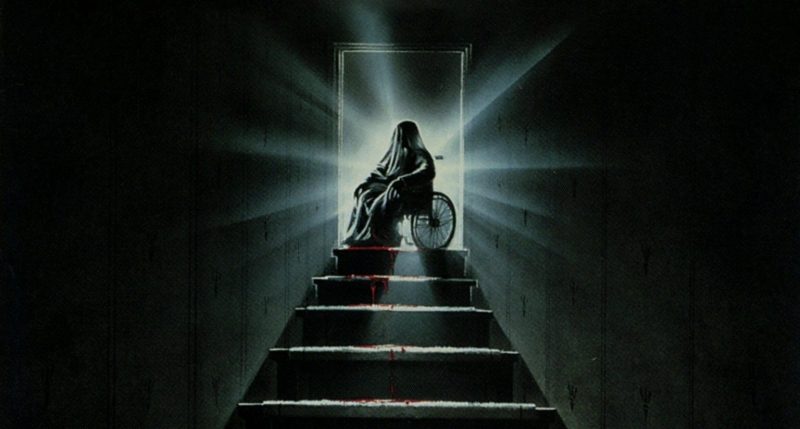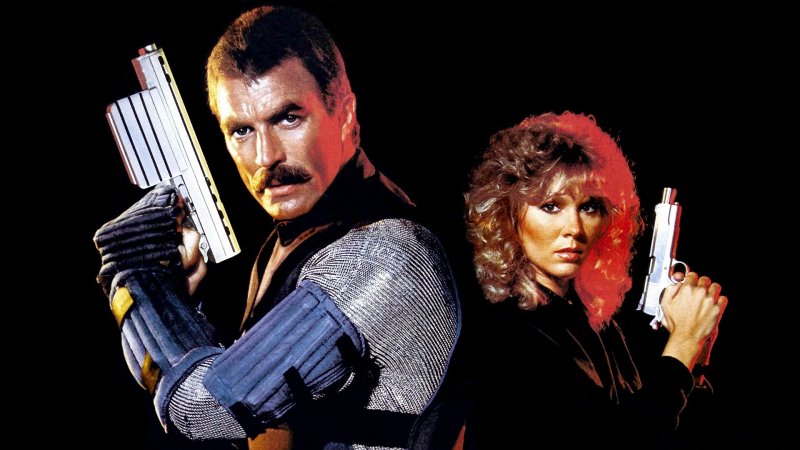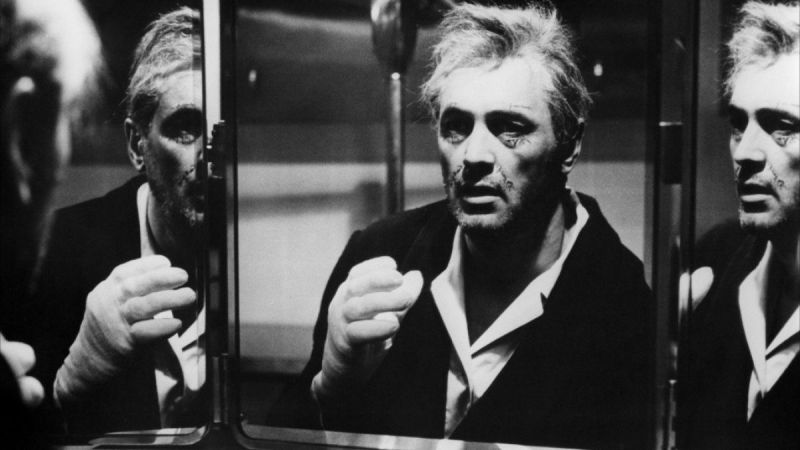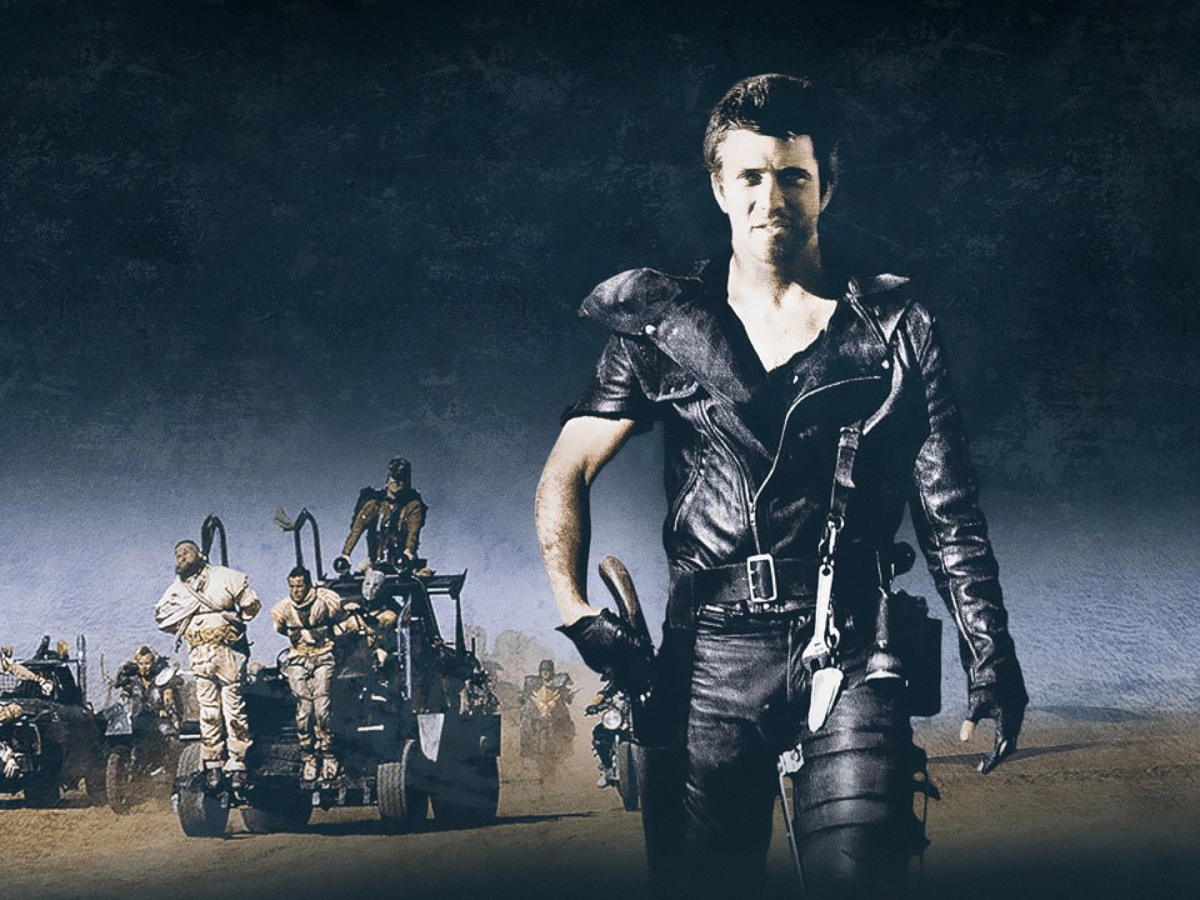
Prepare to be speechless as Paul Verhoeven pushes the boundaries with a quagmire of sleaze, violence and controversy
Prior to the release of Showgirls in 1995 to almost universal condemnation and derision, Paul Verhoeven was riding high in Hollywood. Having scored a hit with 1992’s controversial, censor- baiting Basic Instinct, the Dutch auteur was the pick of the pops. Initially, Verhoeven had planned to follow Basic Instinct with a film called Crusade, with Arnold Schwarzenegger in the lead. Unfortunately, the plug was pulled by production company Carolco due to financial difficulties when it became apparent that the struggling company didn’t have the funds to finance Crusade and Cutthroat Island simultaneously. Crusade was therefore shut down to make way for Renny Harlin’s pirate folly, which would ultimately sink at the box office to the tune of $100,000,000.
Following the disappointment of Crusade, Verhoeven turned his attentions to Showgirls, a project both he and Joe Esterhas had been plotting during their time working together on Basic Instinct. Via Showgirls, Esterhas and Verhoeven would set their sights on Las Vegas. They would produce a rags-to-riches, stripper-on-the-make movie that promised to provide an insight into the backstage shenanigans of Sin City after hours.

In order to do the script justice, Verhoeven deliberately angled for an NC-17 rating with a view to trading on the infamy of its certificate to generate publicity. Verhoeven also had an aesthetic rationale for seeking the rating too. During the making of Basic Instinct, the director reputedly engaged in numerous running battles with censors over the film’s explicitness. Anticipating similar scuffles with Showgirls, Verhoeven sought to avoid conflict by making it clear from the get-go that he would only make it if it was rated NC-17.
Man, everybody got AIDS and shit!
James Smith
Esterhas, who was one of the highest-paid screenwriters in Hollywood at that time, was reportedly paid $2,000,000 in advance for the script and a further hefty bonus once a studio bought the rights. Drew Barrymore was originally considered for the lead role along with Charlize Theron and Angelina Jolie, though Verhoeven eventually went with big screen debutante Elizabeth Berkley. During a Rolling Stone interview in 2015, Verhoeven claimed that Berkley got the part because she was able to combine acting, dancing and a willingness to commit to large scale nudity on screen, which a lot of other actresses at the time were reportedly nervous about.
Esterhas claimed that the general plot outline for Showgirls occurred to him in a cannabis-induced fever dream, though this was likely following a home viewing of All About Eve since, narratively speaking, Showgirls is a beat-for-beat reprise of the Joseph L Mankiewicz classic.
Showgirls recounts the story of enigmatic dancer Nomi Malone, newly arrived in Vegas from parts unknown. Nomi is beset upon manoeuvring her way to the pinnacle of the dance circuit ladder using any and all means at her disposal. We first encounter her thumbing a ride on the highway. She accepts a lift from a young greaser in a pick-up truck who she threatens with a switchblade after he crassly comes on to her. She has next to no backstory to speak of at this juncture, though she does carry the switchblade with her, hinting at past experiences that have left her feeling vulnerable.

Upon arriving in Vegas, Nomi is promptly abandoned and ripped off by her chauffeur, triggering one of many unconvincing tantrums and an argument with Gina Ravera’s Molly Abrams, who despite knowing precisely nothing about Nomi, other than she’s quick to anger and officially destitute, offers to let her stay with her until such time as she is able to fend for herself.
The film then jumps forward six weeks where we find Nomi shacked up with her new best friend in a trailer. Nomi is working at a strip club called Cheetah’s when she decides to skip work and hang out with her friend backstage at Goddess, a dance show at the prestige Stardust Hotel where Molly works. Nomi is introduced to the show’s star, Cristal Connors, played with pouty disdain by Gina Gershon, who dismisses Nomi with a bitchy aside but soon develops a predatory interest in her, rocking up to her workplace with sleazy partner Zach — played by a knowingly mucilaginous Kyle MacLachlan — and engaging in her services for a backroom lap-dance. This leads to an audition to join the cast of Goddess, at which point Nomi’s ascension to the top begins in earnest.
In the aforementioned interview with Rolling Stone in 2015, Verhoeven claimed that Showgirls was ‘the most elegant movie I’ve ever done.’ Whilst it’s hard to agree with what was probably a sardonic statement on the part of the Dutch provocateur, it’s hard to dismiss his statement outright.
If you want to last longer than a week, you give me a blow-job. First I get you used to the money, then I make you swallow.
Al Torres
On first consumption, Showgirls leaves an incredibly bad aftertaste. The paper-thin script wallows in a misogynistic quagmire of sleaze, violence and controversy. The performances are crass and cringe inducing. The music is crappy and intrusive. The photography is garish and the production design trashy. Taken at face value, Verhoeven’s movie is insufferable. The fetishization of Nomi and her dancing queens as filtered through the overtly masculine lens of Jost Vacano’s leering camera is exhausting. To summarise, it is thematically troubling, impossible to like and fully deserving of the scorn that was heaped on it.

Now look again.
Is Showgirls really a stupefying folly that ought to be condemned to the dustbin of cinematic history and squashed under as many bags of refuse as one can feasibly heap on it? Or is it, as the revisionists would have us believe, a knowingly constructed, misunderstood artifice that seeks to satirise America’s preoccupation with pornography, celebrity, capitalism, and narcissism?
Consider for a moment Verhoeven’s other American films, all of which, with perhaps the exception of 1985’s Flesh and Blood, poke a satirical finger in the eye of America. In Robocop, Verhoeven took a satirical blowtorch to America’s obsession with guns and right-wing politics. In Total Recall he focused his satirical sights on masculine America’s preoccupation with its own reflection. In Starship Troopers he scrutinised the nation’s penchant for militarism and xenophobia. In Hollow Man, obsessive voyeurism was placed under the microscope with disturbing results.
Now consider the repugnant and bafflingly atrocious dialogue in Showgirls. If you agree that the writer and director’s intention is to reflect back at the viewer the way in which patriarchal America seeks to fetishize and objectify women via language and culture, the film’s dialogue starts to make sense. After all, how else does one explain masculinised lines such as ‘She looks better than a ten-inch dick.’ As uttered by The Cheetahs Club’s resident comedy queen, Henrietta “Mama” Bazoom?
As for the photography, scoring, set design and the terrifying dance choreography, if you’re going to make a movie satirising America’s obsession with pornography, capitalism, self-gratification and commercial prostitution, then surely the film’s overall aesthetic needs to reflect this. The production design certainly reflects it, the Goddess stage shows incorporating explosive volcanos and kitsch leather bondage bikers. The music, meanwhile, composed by David A. Stewart, brought in after original composer, Prince, dropped out, fits the material perfectly. Whilst Stewart and Terry Hall’s original composition Walk into the Wind would go on to win a Razzie for worst original song, when you consider that Verhoeven wanted the music to be banal, to reflect the fact the shows from Goddess were ‘not all good stuff,’ the film’s anti-musical approach, retrospectively, seems inspired.

Then there’s the dancing. Marguerite Pomerhn-Derricks’ dance choreography is clearly representative of Verhoeven’s ‘anti-erotic’ sensibility. The dance routines are vulgar and jarring, characterised by mechanical and aggressive movements. Women are constantly sexualised during these routines. The American Dream, meanwhile, is rendered offensive by association.
Further scrutiny reveals that the film’s gallery of exaggerated grotesques and ugly caricatures are reminiscent of the trash-camp sensibilities of John Waters. There isn’t a single performance that isn’t a hyperbolic overstatement. Elizabeth Berkley may have borne the brunt of critical animosity for her shambolic performance as an uncoordinated Barbie doll with poor impulse control and a potty mouth. However, the rest of the cast are equally outrageous.
Not everything in the film can be rendered acceptable by reappraisal. Showgirls’ final act lurches into rape and revenge territory when the film’s only sympathetic character, Molly, is brutally gang raped by her celebrity idol’s entourage. The scene is uncomfortable and disturbing and tonally out of sync with the rest of the picture. When the film reverts to high camp by having Nomi embark on a cartoon revenge mission that sees her pulling her ubiquitous switchblade on the perp and roundhouse kicking him in the head as punishment, it feels like a cop out of sorts that renders the horrific impact of the preceding scenes inert.
Come back when you’ve fucked some of this baby fat off. See ya.
Tony Moss
Despite its status as the most successful NC-17 rated film in history up to that point, upon its release Showgirls was roundly panned. Critics hated it. The box office returns were unexpectedly low, and everyone associated with it was subsequently pilloried. Berkley’s agents dropped her. Verhoeven struggled to find work outside of the science fiction genre for the remainder of his stay in the states. Kyle McLachlan distanced himself from it, as did screenwriter Esterhas, claiming, ‘Clearly we made mistakes … Maybe there was a certain hubris involved.’

In spite of this, the film would subsequently find its audience via a slew of midnight movie screenings. The gay community, following rejection by mainstream cinemagoers, enthusiastically adopted the film, thereby helping it to become one of MGM’s most profitable home video releases. In the years that followed, its cult appeal has continued to grow.
A tongue in cheek sequel titled Showgirls 2: Penny’s from Heaven, was released in 2011, directed by Rena Riffel, (Penny Slot in the original movie), and in 2013, an off-Broadway musical parody titled Showgirls! The Musical, produced by Bob and Tobly McSmith, was released to general acclaim.
Noted critics and cineastes have returned to the movie to reappraise its merits in recent years too, arguing its qualities as a subversive reinterpretation of the Star Is Born mythos. This reappraisal recently culminated in 2019’s film festival favourite You Don’t Nomi, Jeffrey McHale’s acclaimed documentary charting the film’s controversial history and post flameout success as a cult cinema favourite.
Director: Paul Verhoeven
Screenplay: Joe Eszterhas
Music: David A. Stewart
Cinematography: Jost Vacano
Editing: Mark Goldblatt &
Mark Helfrich





































